Carbon sequestration is a critical environmental process that involves the capture and long-term storage of atmospheric carbon dioxide (CO₂) to mitigate the adverse effects of global warming and climate change. This process is essential in managing the amount of CO₂ in the atmosphere, which is a major contributor to the greenhouse effect and subsequent global temperature rise. The primary objective of carbon sequestration is to reduce the overall concentration of greenhouse gases, thereby limiting their impact on global climate patterns. Carbon sequestration can occur naturally through processes such as biosynthesis in plants, where CO₂ is converted into organic matter, or it can be facilitated through various human-engineered methods designed to capture and store carbon on a larger scale.
The Journey of Sequestered Carbon
Sequestered carbon refers to carbon that has been effectively captured from the atmosphere and securely stored in a stable state, thereby preventing it from contributing to the greenhouse effect. Methods of sequestration vary and have their own costs and benefits associated with them. The goal is to securely sequester carbon into the earth for the long term and keep it from building in the atmosphere.
Exploring Carbon Sequestration and Storage
Carbon sequestration and storage (CSS) is a comprehensive approach that involves a variety of techniques and technologies designed to trap and retain CO₂, preventing it from contributing to atmospheric concentrations. These methods can be broadly categorized into biological, geological, and technological approaches, each with its unique mechanisms and advantages.
Biological Sequestration: This method leverages natural processes to absorb and store CO₂. Plants, through photosynthesis, absorb CO₂ from the atmosphere and convert it into organic matter. While reforestation is a well-known biological sequestration method, there are innovative alternatives that are gaining traction. One such method is the production of biochar from plant-based materials. Biochar is a stable form of carbon created by heating organic material, such as agricultural waste, in the absence of oxygen. This process, known as pyrolysis, results in a charcoal-like substance that can be added to soil. Biochar not only sequesters carbon but also improves soil fertility, water retention, and crop yields, offering multiple environmental benefits.
Geological Sequestration: This method involves injecting captured CO₂ into underground rock formations, such as depleted oil and gas fields or deep saline aquifers. Geological sequestration is considered one of the most secure and long-term options for storing CO₂. The injected CO₂ is trapped by a combination of physical and chemical processes that ensure it remains underground. The integrity of these storage sites is monitored through advanced technologies to detect any potential leaks and to ensure that the CO₂ remains securely stored.
Technological Sequestration: Advances in technology have led to the development of innovative solutions for capturing and storing CO₂. Carbon capture and storage (CCS) systems are designed to capture emissions from industrial processes, power plants, and other significant sources of CO₂. Once captured, the CO₂ is compressed and transported to storage sites, where it can be injected into geological formations or utilized in various industrial applications. Emerging technologies, such as direct air capture (DAC), offer the potential to capture CO₂ directly from the atmosphere, providing an additional tool in the fight against climate change.
The Role of Carbon Sequestering in Climate Mitigation
Carbon sequestering plays a vital role in achieving climate goals and mitigating the impact of global warming. By actively removing CO₂ from the atmosphere and securely storing it, carbon sequestering helps to balance the carbon cycle and offset emissions from human activities. This process is essential for reducing the overall concentration of greenhouse gases in the atmosphere and limiting their impact on global climate patterns.
Various sectors, including energy, agriculture, and industry, can implement carbon sequestering practices to contribute to this effort. In the energy sector, power plants and industrial facilities can adopt CCS technologies to capture and store emissions. In agriculture, practices such as agroforestry, cover cropping, and the application of biochar can enhance soil carbon storage and improve soil health. Industries can also explore the use of captured CO₂ in manufacturing processes, such as producing building materials or synthetic fuels, which can further reduce the carbon footprint of these sectors.
Implementing Effective Carbon Sequestration Strategies
For carbon sequestration to be effective, it is essential to adopt strategies that are both scalable and sustainable. One promising approach is the use of plant-based solutions to produce biochar. This method not only sequesters carbon but also enhances soil fertility and agricultural productivity. Biochar production involves the pyrolysis of organic materials, such as agricultural waste, which converts them into a stable form of carbon that can be added to soil. This process not only sequesters carbon but also improves soil health, water retention, and crop yields.
Implementing biochar production close to emission sources can minimize transportation costs and further reduce the carbon footprint. Additionally, integrating biochar production into existing agricultural and waste management practices can provide economic benefits for farmers and communities. By creating a market for biochar and other carbon-rich products, we can incentivize sustainable practices and promote the adoption of carbon-sequestering technologies.
Challenges and Issues in Geological and Technological Sequestration
Problems with Geological Sequestration
Leakage Risks: One of the primary concerns with geological sequestration is the potential for CO₂ leakage from storage sites. Although the majority of CO₂ is securely trapped, there is always a risk that small amounts could escape through faults, fractures, or abandoned wells. This leakage could undermine the effectiveness of sequestration efforts and pose environmental and safety risks.
Long-term Monitoring and Verification: Ensuring the long-term integrity of CO₂ storage sites requires continuous monitoring and verification, which can be technically challenging and costly. Advanced technologies are needed to detect and measure any potential leaks, and maintaining such systems over long periods can be resource-intensive.
Public Acceptance: Public perception and acceptance of geological sequestration can be a significant hurdle. Communities near potential storage sites may have concerns about the safety and environmental impacts of CO₂ injection, which can lead to opposition and delays in project implementation.
Site Selection and Availability: Identifying suitable geological formations for CO₂ storage is a complex process that involves extensive geological surveys and assessments. Not all regions have the necessary geological characteristics, such as suitable porosity and cap rock integrity, to safely store CO₂. This limits the availability of viable storage sites.
Induced Seismicity: The injection of CO₂ into deep geological formations can sometimes induce seismic activity, or small earthquakes. While generally low in magnitude, these induced seismic events can raise concerns about the safety and stability of storage sites.
High Costs: The costs associated with geological sequestration can be substantial. This includes expenses related to site selection, CO₂ capture and compression, transportation, injection, and long-term monitoring. These high costs can be a barrier to widespread adoption.
Problems with Technological Sequestration
High Energy Requirements: Technological sequestration methods, particularly carbon capture and storage (CCS) systems, often require significant amounts of energy to capture, compress, and transport CO₂. This can reduce the overall efficiency of the process and increase operational costs.
Economic Viability: The economic feasibility of CCS technologies is often questioned due to high upfront capital costs and ongoing operational expenses. Without sufficient financial incentives or regulatory support, the deployment of CCS systems can be economically challenging.
Technological Maturity: While significant progress has been made in developing CCS technologies, many systems are still in the demonstration or early deployment stages. Achieving the necessary scale for meaningful climate impact requires further technological advancements and cost reductions.
Infrastructure Development: Establishing the infrastructure needed for technological sequestration, including CO₂ capture facilities, transportation networks (such as pipelines), and storage sites, is a complex and expensive undertaking. Coordinating these elements across different regions and sectors poses logistical challenges.
Regulatory and Legal Frameworks: The implementation of technological sequestration requires robust regulatory and legal frameworks to ensure safety, environmental protection, and accountability. Developing these frameworks can be time-consuming and may vary significantly across jurisdictions, complicating large-scale deployment.
Limited Applications: Some technological sequestration methods are better suited to specific industrial processes or emission sources. For example, CCS is more effective for large, stationary sources of CO₂, such as power plants and industrial facilities. This limits its applicability to smaller or more diffuse emission sources.
Public and Stakeholder Engagement: As with geological sequestration, gaining public and stakeholder support for technological sequestration projects can be challenging. Concerns about environmental impacts, safety, and the perceived effectiveness of these technologies must be addressed through transparent communication and engagement efforts.
While geological and technological sequestration methods hold significant potential for reducing atmospheric CO₂ levels, they face a range of challenges. Addressing these issues requires continued research, technological innovation, regulatory support, and effective public engagement to ensure that these sequestration methods can be implemented safely, efficiently, and at scale.
Conclusion
So what is carbon sequestration, sequestered carbon, carbon sequestration and storage, and carbon sequestering? They are integral components of the global effort to combat climate change. By understanding and utilizing these concepts, businesses, policymakers, and individuals can make informed decisions to support sustainable practices and invest in technologies that effectively capture and store CO₂. Embracing innovative solutions, such as biochar production, will be crucial in achieving long-term climate goals and ensuring a healthier planet for future generations. Through collective action and the adoption of scalable and sustainable carbon sequestering strategies, we can significantly reduce atmospheric CO₂ levels and mitigate the impact of climate change.
To be part of the solution and learn more about innovative carbon sequestration techniques, explore the resources and opportunities provided by Dynamic Carbon Credits (DCC). DCC is dedicated to advancing sustainable practices and technologies that capture and store CO₂, offering practical solutions for businesses, policymakers, and individuals committed to combating climate change.
Connect with us, and discover how you can contribute to a sustainable future by supporting and investing in carbon sequestration initiatives. Together, we can make a difference and ensure a healthier planet for future generations.





